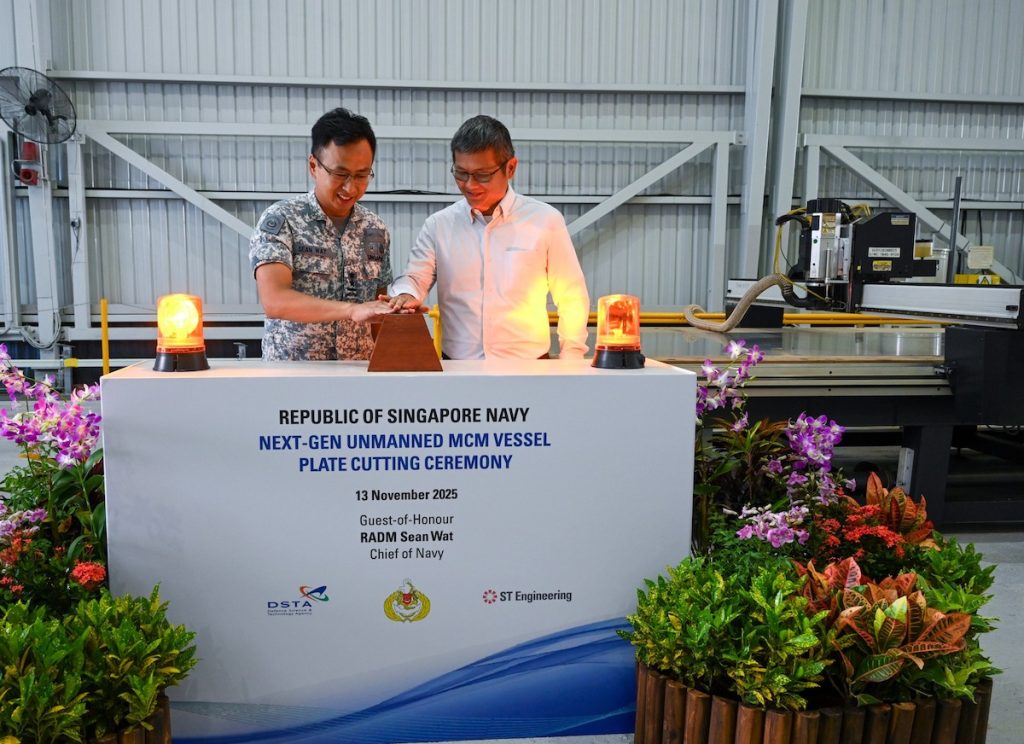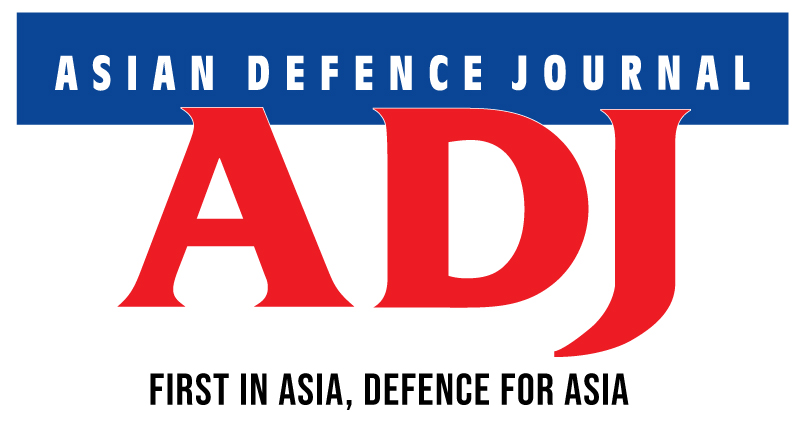RSN Begins Construction of Unmanned Mine Countermeasures Fleet
SINGAPORE has begun construction on the Republic of Singapore Navy’s (RSN) Mine Countermeasures Unmanned Surface Vessels (MCM USV) amidst a shift towards unmanned mine countermeasure taskings in ensuring more efficient and safer ways to conduct MCM operations.
The steel-cutting marked the official start of hull construction, transitioning from design and planning to actual construction. With that, the RSN is making steady progress to introducing these MCM USVs from 2027 onwards. These USVs, together with other MCM capabilities, will replace the existing Bedok-class MCMVs and MCM capabilities, enabling the RSN to better safeguard our waters and sea lines of communications.

The MCM USVs will operate as part of the RSN’s suite of enhanced MCM capabilities, that includes Autonomous Underwater Vehicles (AUVs), minesweeping systems, command and control (C2) and maintenance infrastructures. Each USV can deploy a Towed Synthetic Aperture Sonar (TSAS) to survey and detect underwater threats, or Mine Neutralisation System (MNS) to identify and neutralise these threats.
An RSN statement read “Given the range of missions that the RSN undertakes, the USVs are designed for operational flexibility, where it facilitates rapid reconfiguration when required. For instance, the USV can be configured with either the Towed Synthetic Aperture Sonar (TSAS) for seabed survey, or Mine Neutralisation System (MNS) for identification and neutralisation. Equipped with a suite of electro-optical system, gun, and less-lethal weapon systems, the MCM USVs can also be rapidly re-rolled for other maritime security tasks when required. The commonality in the design and maintenance of these USVs also further optimises the operational flexibility with quicker turnarounds.”
The MCM USVs would enable a new and more efficient MCM operating concept, where the USVs can be configured to take on either the “sensor” or “shooter” role. These USVs could be deploy for simultaneous survey or neutralisation operations, which would enable significant savings in the traditionally time-consuming MCM operations performed sequentially by a single MCMV, given that both the “sensor” and “shooters” are tethered to the same ship.
Traditional manpower-intensive crane operations to launch and recover these payloads (minimally 4-5 personnel required) are also replaced with automated launch and recovery systems that are remotely controlled. Additionally, as the USVs would employ automated berthing/unberthing to replace traditional seamanship evolutions, further manpower savings are expected.
With the ability to operate remotely from shore, the MCM USV eliminates the need for personnel to be onboard, keeping them safe from mine threats. Leveraging advanced C3 with automated launch and recovery systems, each USV only requires a small team of operators for remote control and monitoring, vis-à-vis the existing manpower intensive tasks on the MCMV (which requires 30 personnel minimally).


